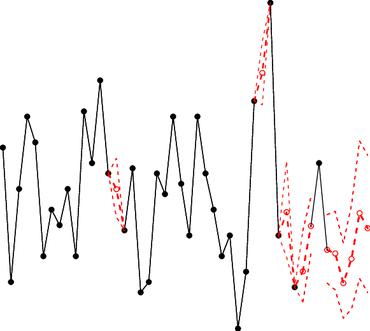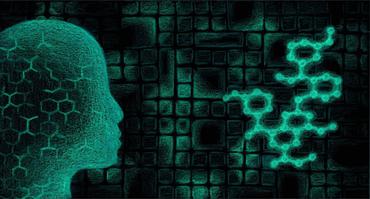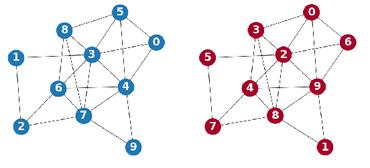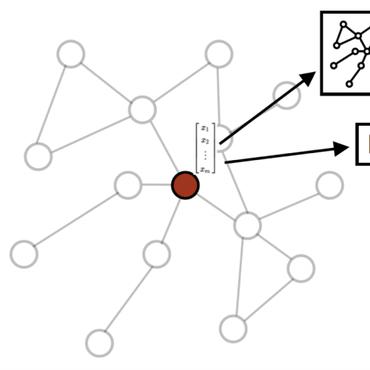Search Results for author: Sayan Ranu
Found 30 papers, 15 papers with code
GRAPHGINI: Fostering Individual and Group Fairness in Graph Neural Networks
no code implementations • 20 Feb 2024 • Anuj Kumar Sirohi, Anjali Gupta, Sayan Ranu, Sandeep Kumar, Amitabha Bagchi
Extensive experimentation on real-world datasets showcases the efficacy of GRAPHGINI in making significant improvements in individual fairness compared to all currently available state-of-the-art methods while maintaining utility and group equality.
EUGENE: Explainable Unsupervised Approximation of Graph Edit Distance
no code implementations • 8 Feb 2024 • Aditya Bommakanti, Harshith Reddy Vonteri, Sayan Ranu, Panagiotis Karras
The need to identify graphs having small structural distance from a query arises in biology, chemistry, recommender systems, and social network analysis.
NeuroCUT: A Neural Approach for Robust Graph Partitioning
no code implementations • 18 Oct 2023 • Rishi Shah, Krishnanshu Jain, Sahil Manchanda, Sourav Medya, Sayan Ranu
Second, we decouple the parameter space and the partition count making NeuroCUT inductive to any unseen number of partition, which is provided at query time.
Mirage: Model-Agnostic Graph Distillation for Graph Classification
1 code implementation • 14 Oct 2023 • Mridul Gupta, Sahil Manchanda, Hariprasad Kodamana, Sayan Ranu
GNNs, like other deep learning models, are data and computation hungry.
GNNX-BENCH: Unravelling the Utility of Perturbation-based GNN Explainers through In-depth Benchmarking
no code implementations • 3 Oct 2023 • Mert Kosan, Samidha Verma, Burouj Armgaan, Khushbu Pahwa, Ambuj Singh, Sourav Medya, Sayan Ranu
Motivated by this need, we present a benchmarking study on perturbation-based explainability methods for GNNs, aiming to systematically evaluate and compare a wide range of explainability techniques.
EGraFFBench: Evaluation of Equivariant Graph Neural Network Force Fields for Atomistic Simulations
no code implementations • 3 Oct 2023 • Vaibhav Bihani, Utkarsh Pratiush, Sajid Mannan, Tao Du, Zhimin Chen, Santiago Miret, Matthieu Micoulaut, Morten M Smedskjaer, Sayan Ranu, N M Anoop Krishnan
In addition to our thorough evaluation and analysis on eight existing datasets based on the benchmarking literature, we release two new benchmark datasets, propose four new metrics, and three challenging tasks.
 Ranked #1 on
Formation Energy
on GeTe
Ranked #1 on
Formation Energy
on GeTe
Discovering Symbolic Laws Directly from Trajectories with Hamiltonian Graph Neural Networks
no code implementations • 11 Jul 2023 • Suresh Bishnoi, Ravinder Bhattoo, Jayadeva, Sayan Ranu, N M Anoop Krishnan
Here, we present a Hamiltonian graph neural network (HGNN), a physics-enforced GNN that learns the dynamics of systems directly from their trajectory.
Graph Neural Stochastic Differential Equations for Learning Brownian Dynamics
no code implementations • 20 Jun 2023 • Suresh Bishnoi, Jayadeva, Sayan Ranu, N. M. Anoop Krishnan
Here, we propose a framework, namely Brownian graph neural networks (BROGNET), combining stochastic differential equations (SDEs) and GNNs to learn Brownian dynamics directly from the trajectory.
FRIGATE: Frugal Spatio-temporal Forecasting on Road Networks
1 code implementation • 14 Jun 2023 • Mridul Gupta, Hariprasad Kodamana, Sayan Ranu
In addition, FRIGATE is robust to frugal sensor deployment, changes in road network connectivity, and temporal irregularity in sensing.
Empowering Counterfactual Reasoning over Graph Neural Networks through Inductivity
1 code implementation • 7 Jun 2023 • Samidha Verma, Burouj Armgaan, Sourav Medya, Sayan Ranu
Graph neural networks (GNNs) have various practical applications, such as drug discovery, recommendation engines, and chip design.
GRAFENNE: Learning on Graphs with Heterogeneous and Dynamic Feature Sets
no code implementations • 6 Jun 2023 • Shubham Gupta, Sahil Manchanda, Sayan Ranu, Srikanta Bedathur
In this work, we address these limitations through a novel GNN framework called GRAFENNE.
GSHOT: Few-shot Generative Modeling of Labeled Graphs
1 code implementation • 6 Jun 2023 • Sahil Manchanda, Shubham Gupta, Sayan Ranu, Srikanta Bedathur
Despite their initial success, these techniques, like much of the existing deep generative methods, require a large number of training samples to learn a good model.
StriderNET: A Graph Reinforcement Learning Approach to Optimize Atomic Structures on Rough Energy Landscapes
no code implementations • 29 Jan 2023 • Vaibhav Bihani, Sahil Manchanda, Srikanth Sastry, Sayan Ranu, N. M. Anoop Krishnan
Optimization of atomic structures presents a challenging problem, due to their highly rough and non-convex energy landscape, with wide applications in the fields of drug design, materials discovery, and mechanics.
Unravelling the Performance of Physics-informed Graph Neural Networks for Dynamical Systems
1 code implementation • 10 Nov 2022 • Abishek Thangamuthu, Gunjan Kumar, Suresh Bishnoi, Ravinder Bhattoo, N M Anoop Krishnan, Sayan Ranu
We evaluate these models on spring, pendulum, gravitational, and 3D deformable solid systems to compare the performance in terms of rollout error, conserved quantities such as energy and momentum, and generalizability to unseen system sizes.
Global Counterfactual Explainer for Graph Neural Networks
1 code implementation • 21 Oct 2022 • Mert Kosan, Zexi Huang, Sourav Medya, Sayan Ranu, Ambuj Singh
One way to address this is counterfactual reasoning where the objective is to change the GNN prediction by minimal changes in the input graph.
Learning Articulated Rigid Body Dynamics with Lagrangian Graph Neural Network
1 code implementation • 23 Sep 2022 • Ravinder Bhattoo, Sayan Ranu, N. M. Anoop Krishnan
Lagrangian and Hamiltonian neural networks (LNNs and HNNs, respectively) encode strong inductive biases that allow them to outperform other models of physical systems significantly.
Enhancing the Inductive Biases of Graph Neural ODE for Modeling Dynamical Systems
no code implementations • 22 Sep 2022 • Suresh Bishnoi, Ravinder Bhattoo, Sayan Ranu, N. M. Anoop Krishnan
Neural networks with physics based inductive biases such as Lagrangian neural networks (LNN), and Hamiltonian neural networks (HNN) learn the dynamics of physical systems by encoding strong inductive biases.
Learning the Dynamics of Particle-based Systems with Lagrangian Graph Neural Networks
no code implementations • 3 Sep 2022 • Ravinder Bhattoo, Sayan Ranu, N. M. Anoop Krishnan
Physical systems are commonly represented as a combination of particles, the individual dynamics of which govern the system dynamics.
Lifelong Learning for Neural powered Mixed Integer Programming
no code implementations • 24 Aug 2022 • Sahil Manchanda, Sayan Ranu
In this work, we study the hitherto unexplored paradigm of Lifelong Learning to Branch on Mixed Integer Programs.
Gigs with Guarantees: Achieving Fair Wage for Food Delivery Workers
1 code implementation • 7 May 2022 • Ashish Nair, Rahul Yadav, Anjali Gupta, Abhijnan Chakraborty, Sayan Ranu, Amitabha Bagchi
With the increasing popularity of food delivery platforms, it has become pertinent to look into the working conditions of the 'gig' workers in these platforms, especially providing them fair wages, reasonable working hours, and transparency on work availability.
TIGGER: Scalable Generative Modelling for Temporal Interaction Graphs
1 code implementation • 7 Mar 2022 • Shubham Gupta, Sahil Manchanda, Srikanta Bedathur, Sayan Ranu
There has been a recent surge in learning generative models for graphs.
Task and Model Agnostic Adversarial Attack on Graph Neural Networks
1 code implementation • 25 Dec 2021 • Kartik Sharma, Samidha Verma, Sourav Medya, Arnab Bhattacharya, Sayan Ranu
In this work, we study this problem and show that GNNs remain vulnerable even when the downstream task and model are unknown.
GREED: A Neural Framework for Learning Graph Distance Functions
2 code implementations • 24 Dec 2021 • Rishabh Ranjan, Siddharth Grover, Sourav Medya, Venkatesan Chakaravarthy, Yogish Sabharwal, Sayan Ranu
To elaborate, although GED is a metric, its neural approximations do not provide such a guarantee.
NeuroMLR: Robust & Reliable Route Recommendation on Road Networks
1 code implementation • NeurIPS 2021 • Jayant Jain, Vrittika Bagadia, Sahil Manchanda, Sayan Ranu
First, our study reveals that a significant portion of the routes recommended by existing methods fail to reach the destination.
Lagrangian Neural Network with Differentiable Symmetries and Relational Inductive Bias
no code implementations • 7 Oct 2021 • Ravinder Bhattoo, Sayan Ranu, N. M. Anoop Krishnan
However, these models still suffer from issues such as inability to generalize to arbitrary system sizes, poor interpretability, and most importantly, inability to learn translational and rotational symmetries, which lead to the conservation laws of linear and angular momentum, respectively.
Momentum Conserving Lagrangian Neural Networks
no code implementations • 29 Sep 2021 • Ravinder Bhattoo, Sayan Ranu, N M Anoop Krishnan
However, these models still suffer from issues such as inability to generalize to arbitrary system sizes, poor interpretability, and most importantly, inability to learn translational and rotational symmetries, which lead to the conservation laws of linear and angular momentum, respectively.
NeuroSED: Learning Subgraph Similarity via Graph Neural Networks
no code implementations • 29 Sep 2021 • Rishabh Ranjan, Siddharth Grover, Sourav Medya, Venkatesan Chakaravarthy, Yogish Sabharwal, Sayan Ranu
Subgraph edit distance (SED) is one of the most expressive measures of subgraph similarity.
GraphReach: Position-Aware Graph Neural Network using Reachability Estimations
1 code implementation • 19 Aug 2020 • Sunil Nishad, Shubhangi Agarwal, Arnab Bhattacharya, Sayan Ranu
In this paper, we develop GraphReach, a position-aware inductive GNN that captures the global positions of nodes through reachability estimations with respect to a set of anchor nodes.
GraphGen: A Scalable Approach to Domain-agnostic Labeled Graph Generation
1 code implementation • 22 Jan 2020 • Nikhil Goyal, Harsh Vardhan Jain, Sayan Ranu
Minimum DFS codes are canonical labels and capture the graph structure precisely along with the label information.
Learning Heuristics over Large Graphs via Deep Reinforcement Learning
2 code implementations • NeurIPS 2020 • Sahil Manchanda, Akash Mittal, Anuj Dhawan, Sourav Medya, Sayan Ranu, Ambuj Singh
Additionally, a case-study on the practical combinatorial problem of Influence Maximization (IM) shows GCOMB is 150 times faster than the specialized IM algorithm IMM with similar quality.








